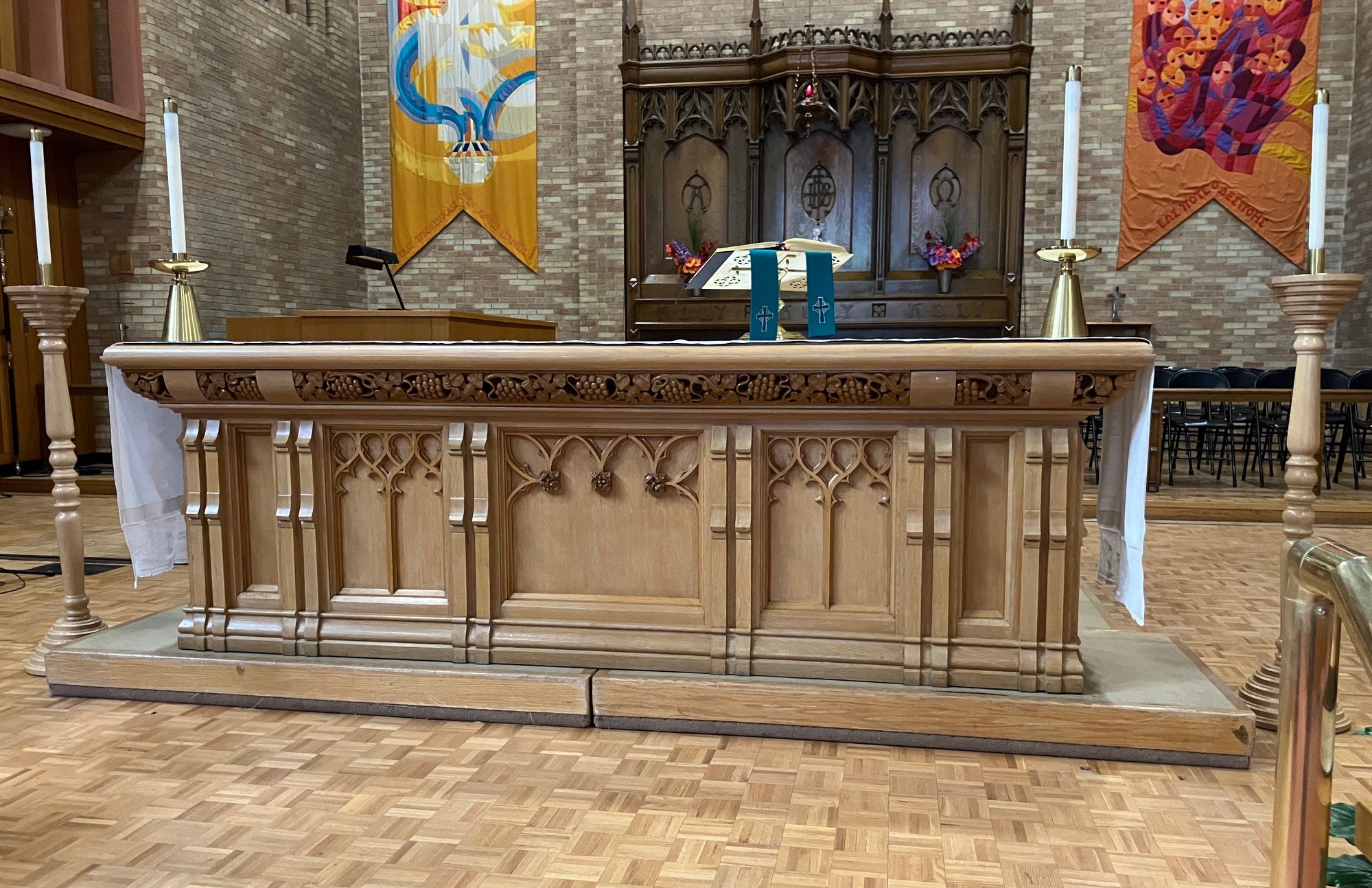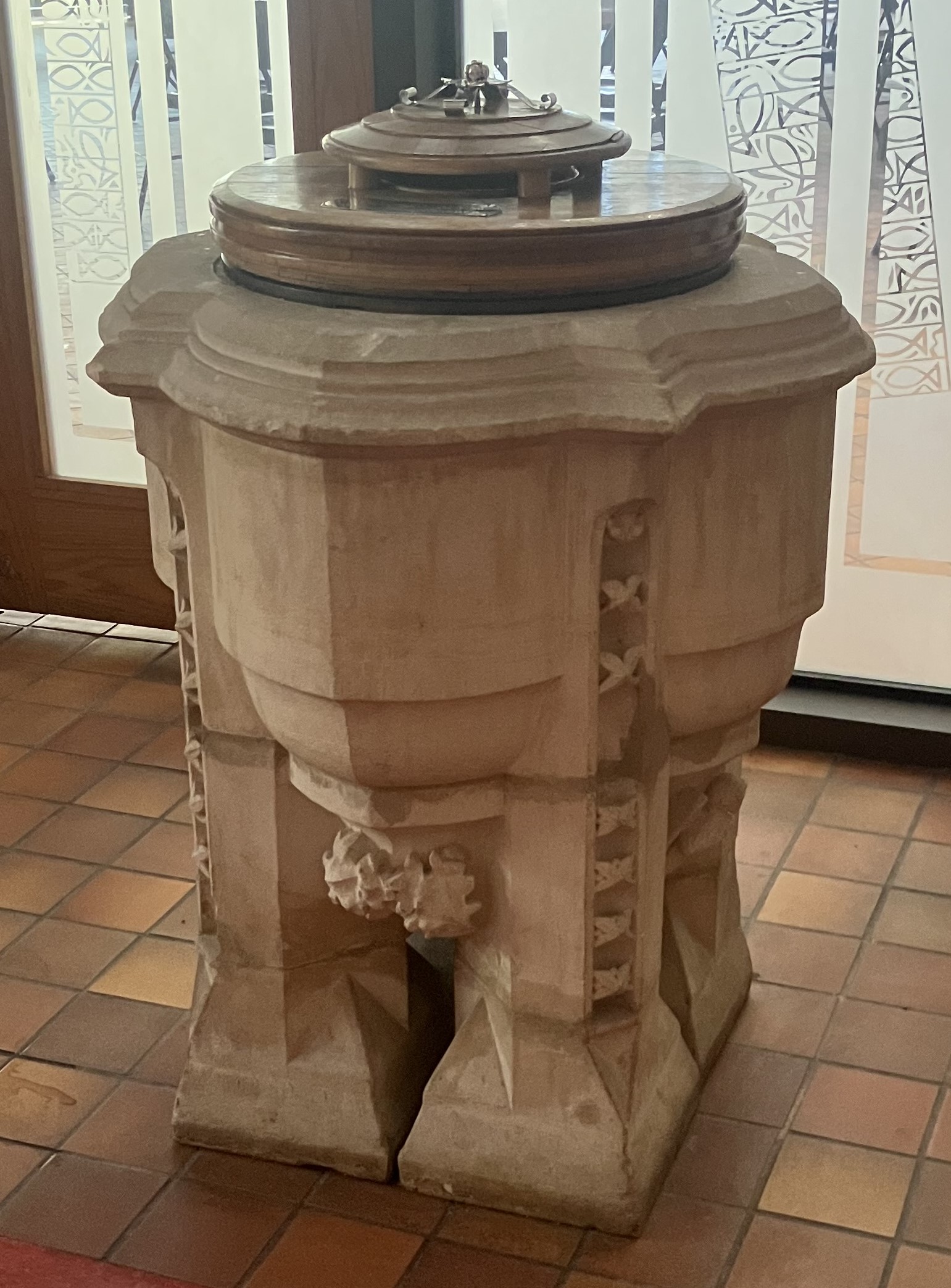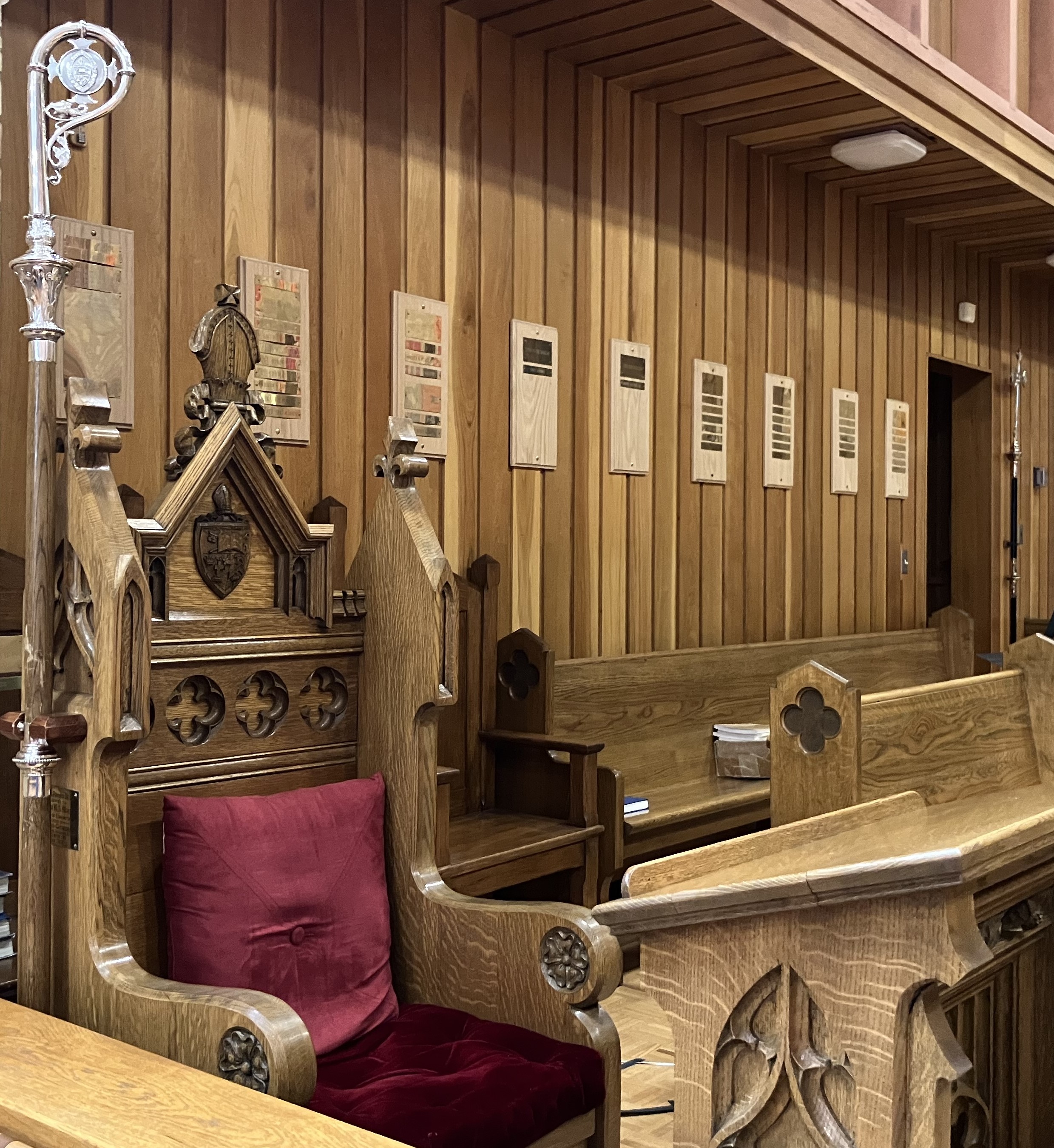The High Altar is the focal point of the church service and represents Christ's presence during the service. Upon the altar is placed the bread and the wine used for the eucharist.
The All Saints' Altar is made from wood donated by Clarke Lumber, a renowned construction company in Edmonton. The original Altar, from the crypt of the old church, has been enlarged to fit the Cathedral space.

The wooden shelf at the back of the chancel is called a Reredos. The Reredos is part of the original church and was dedicated to the men of the congregation who gave their lives during the First World War.
The Altar Cross, at the centre of the Reredos, is made of silver gilt. Flowers are often placed on the Reredos. These flowers offerings are often gifts from parishioners to commemorate the life or witness of individuals connected in some way to the Cathedral. The Altar Cross was given in 1913 in loving memory of Dorothy Gifford.
The brass eagle was once located to the right of the Chancel steps and is where readings from the Bible were delivered. The brass eagle was given to the Cathedral in thanksgiving for the safe return of a parishioner’s son after the First World War. The eagle is a symbol for John the Evangelist, who proclaimed Christ as ‘the word of God’ at the beginning of his Gospel. From the flying eagle, it is hoped that God’s Word will reach to the ends of the earth.
The All Saints' Aumbry was given for the Glory of God ny The Very Reverend Randall Ivany on the tenth anniversary of his ordination of the Priesthood. It was dedicated on May 14, 1971.
The Aumbry is the name given to the small door/cupboard on the wall on the right side of the sanctuary where bread and wine that has not been consumed during communion at the service is kept. The bread and wine is then used for home communions.
The Baptistry Font is made of Caen Stone and is believed to date from 1486. It was brought to All Saints’ Cathedral in 1956 from the Church of St. Peter and St. Paul in Lavenham, Suffolk, England.
The Font Christening Bowl is modern and was given to the Cathedral in memoriam of Frederick Thomson Fisher (1862-1936) and Sarah Boddy Fisher (1869-1953). The Font liner was given in memory of Marjorie C. Ferguson.

The glass etchings on the Baptistry Doors were designed by local glassworks artist, Brenda Malkinson, and dedicated in 1990. They are dedicated “To Those Who Have Contributed Life.” In the etchings can be seen the three crosses of Calvary. The centre Cross, a symbol of Christ’s suffering for Mankind, is the focus, and the observer is encouraged to discover and interpret the other symbols contained within the tracery.
On April 8, 1990, the door panels were dedicated to the Glory of God and were given in thanksgiving by members of All Saints' Cathedral. The lower centre panel was given in memory of H. Stanley Clark and H. Hugh Bancroft, D.Mus. (Lambeth).
Over the following years, the upper panels were dedicated as well:
-Left: To the Glory of God by the Cathedral Congregation and the Cathedral Men.
-Centre-Left: In memory of David D. Sharp, Ruby Jones, and Christopher Goulbourne.
-Centre: In memory of Stewart W. (Bill) Devine.
-Centre-Right: In thanksgiving for the life of Frederick O. Chambers.
-Right: In thanksgiving for the life of Janet J. Jellard MD.

The Bishop's throne, crozier, and prayer desk are on the left side of the Chancel. The crozier is carried for the Bishop or by the bishop when present.
The throne and prayer desk date back to 1931. They were presented to the Right Reverend K.A. Gray, first Bishop of Edmonton, and are replacements of originals destroyed by fire in 1919.
The Coventry Cross is recognized around the world as a symbol of peace and reconciliation. It is made with nails from the original Coventry Cathedral in England, which was destroyed by bombing in November 1940, during the Second World War.
The Cathedral Cross was presented to All Saints’ Cathedral in 1951 by Mr. and Mrs. R.P. Lefroy.
Following the bombing in 1940, Richard Howard, the Provost of Coventry Cathedral in England, had the words “Father forgive” chiseled into the ruins of the sanctuary wall. On the altar above the words, stands the original Coventry Cross of Nails. In the smoking ruins of the cathedral after the destruction, some medieval carpenter’s nails were salvaged from the beams of the vaulted ceiling. Three of these nails were bound together in the shape of a cross, turning remnants of the destruction into a new sign of Christian hope, and showing that the wounds of war were healing.
In the mid 1970's, those churches who had received a Cross of Nails were invited to come together in a common commitment to work and pray for peace, justice, and reconciliation and the Community of the Cross of Nails was formed. Today CCN Partners are to be found in many of the world’s major conflict areas. They include churches and community groups, as well as peacebuilding and reconciliation agencies.